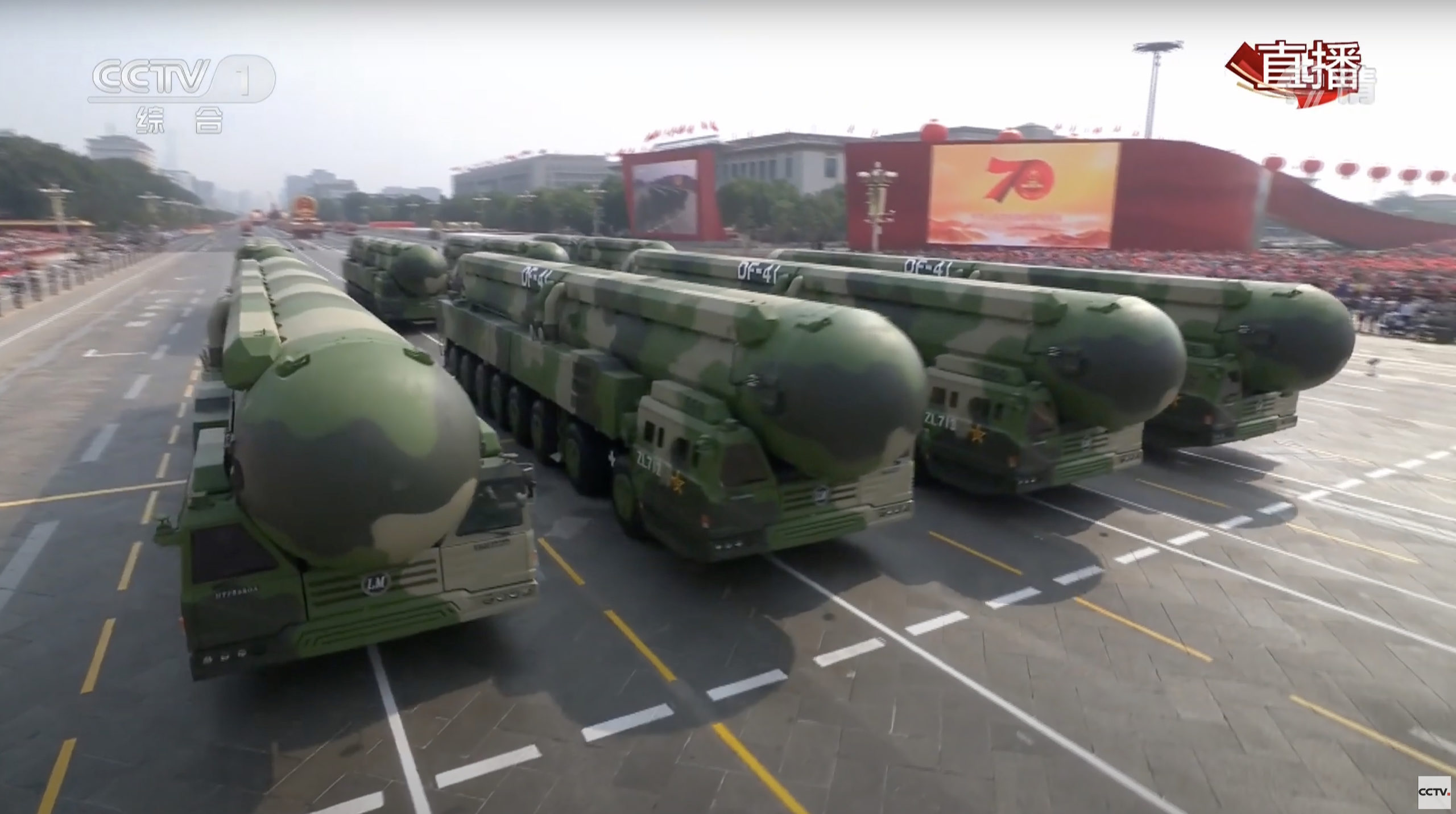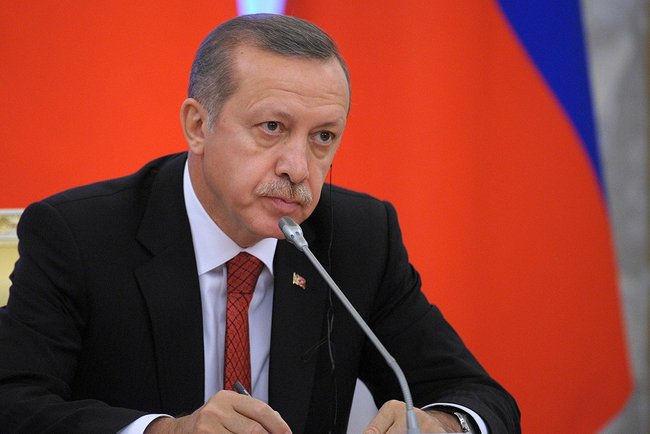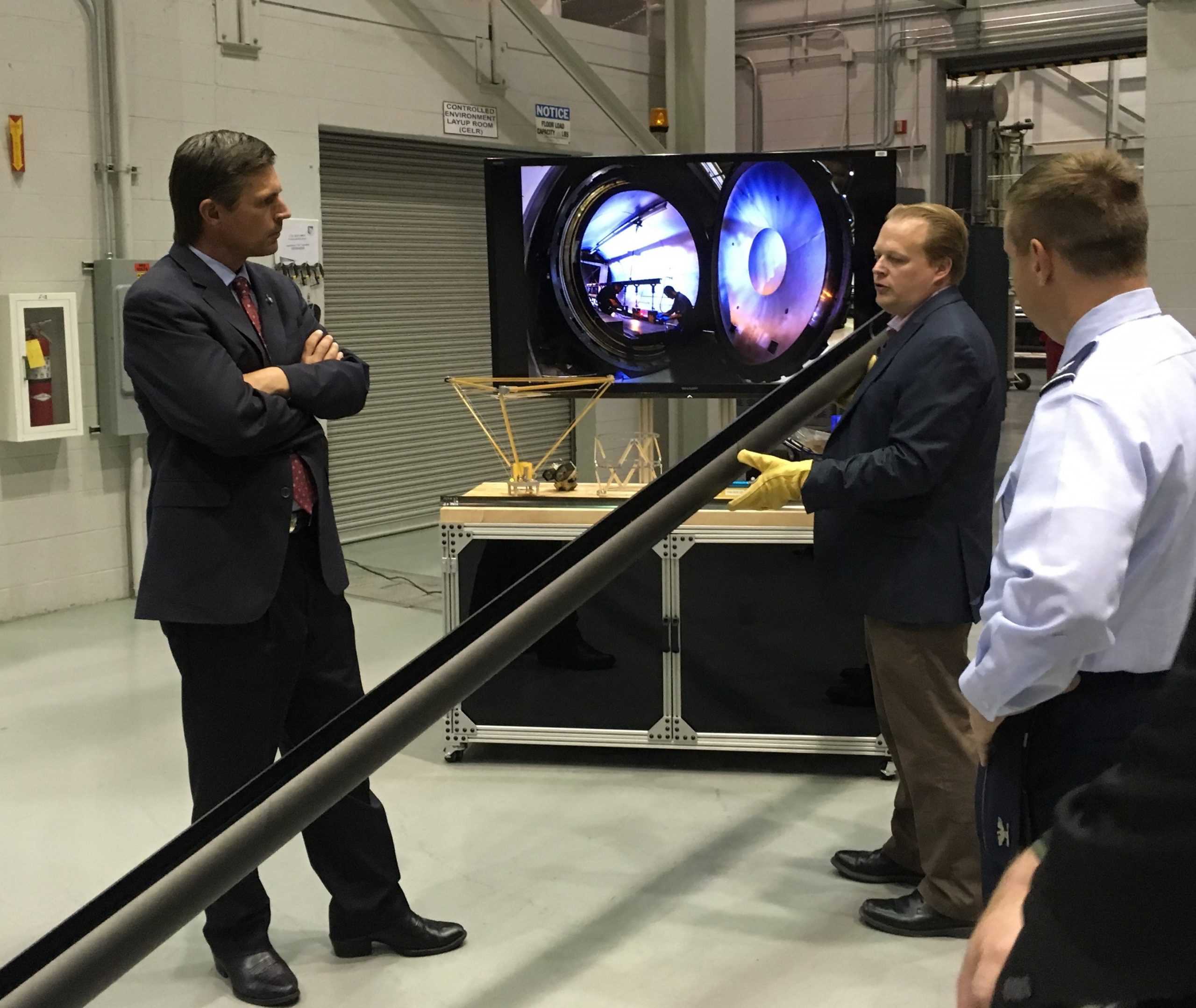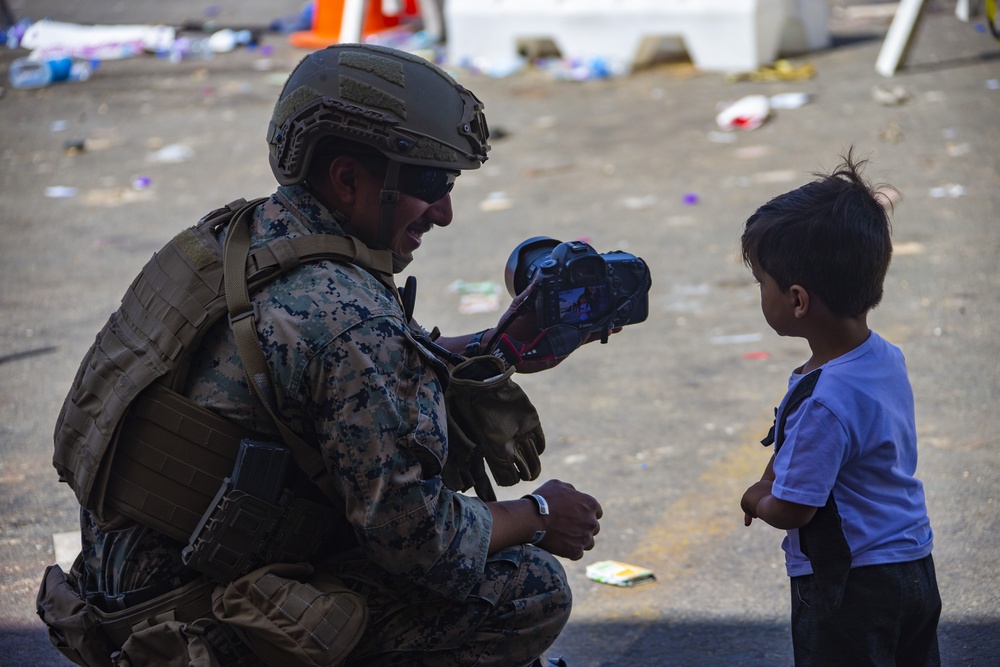China is building new nuclear weapons much faster than previously predicted, already has a “nascent nuclear triad,” and will field more than 1,000 nuclear warheads by 2030, according to the Pentagon’s 2021 report on China’s military power, released Nov. 3.
According to a Pentagon briefing paper highlighting changes from the 2020 edition of the report, “the accelerating pace of the [People’s Republic of China’s] nuclear expansion may enable [it] to have up to 700 deliverable nuclear warheads by 2027, … [and] at least 1,000 warheads by 2030, exceeding the pace and size” that the Defense Department previously projected. China is also shifting to a “launch on warning” posture for its nuclear weapons.
In its last report, the Pentagon said China had 200 nuclear warheads and was expected to double that number by the end of the decade, indicating nearly a trebling of its deployment pace in the coming years. Moreover, the new document only captures developments up to December 2020, and its 2021 release was about two months late, the Pentagon said. The pace may have accelerated even further since.
Air Force Secretary Frank Kendall, speaking at AFA’s Air, Space & Cyber Conference in September, foreshadowed the report, saying that, in his view, China is “developing a first-strike capability.”
The Pentagon was not as alarming, saying China’s plan for now is to develop a “credible second-strike” capacity with nuclear weapons, meaning enough could survive a first strike by the U.S. to retaliate with “multiple rounds of counterstrike, deterring an adversary with the threat of unacceptable damage.”
Even at 1,000 nuclear weapons, though, China will not have achieved parity with the U.S. in terms of warheads, according to a senior defense official who briefed reporters ahead of the report’s release.
According to a State Department disclosure in early October, the U.S. has 3,750 nuclear warheads, down from 3,805 a year earlier and 3,822 in 2018. The U.S. inventory has declined due to the decay of the warheads’ plutonium cores and a replacement pace that doesn’t keep up with retirements.
The Pentagon said the People’s Liberation Army Rocket Forces are developing new intercontinental ballistic missiles that will “significantly improve” their overall force, and they will be equipped with multiple independently targeted warheads, necessitating an increase in warhead production.
China is expanding its “capacity to produce and separate plutonium by constructing faster breeder reactors and reprocessing facilities,” the report said.
The PLARF “has commenced building at least three new solid-fueled ICBM silo fields, which will cumulatively contain hundreds of new ICBM silos,” the report noted. Concurrently, China is expanding its inventory of road-mobile DF-26 intermediate-range ballistic missiles, which can strike ground or maritime targets, and in 2020, fielded “its first hypersonic weapons system, the DF-17 hypersonic glide vehicle-capable medium-range ballistic missile.”
In August, China tested a globe-circling hypersonic weapon, which may have been the DF-17.
China has also built up its H-8 bomber force, adding a “nuclear air-launched ballistic missile,” effectively establishing China’s own version of a triad, along with intercontinental ballistic missiles and submarine-launched ballistic missiles.
The PRC also plans to “increase the peacetime readiness of its nuclear forces by moving to a launch-on-warning (LOW) posture with an expanded silo-based force,” the paper said.
There “clearly has been a change” in China’s approach to nuclear weapons, the defense official said. Besides diversifying its nuclear arsenal, China is also expanding the underlying infrastructure needed to make warheads and connect its weapons with a command and control network, he said.
“The nuclear expansion the PRC is undertaking is certainly very concerning to us,” the official asserted. It “raises some questions … They haven’t really explained why they’re doing it, [and] … we’d like to have more insight into their intentions.”
Compared to China’s historic stockpiles, “they’re moving in a direction that substantially exceeds where they’ve been before in numbers and capabilities,” the official said. This “reinforces the importance of pursuing some practical measures for risk reduction.” While China has a “no first use” of nuclear weapons policy, it is “suggesting in some of their professional military writings that maybe that wouldn’t apply” in all circumstances, the official said. Given that, and the shift to a launch-on-warning posture, “That just makes it more important that responsible powers that seek those capabilities … need to have discussions with each other,” he said.
The official declined to say more because the Nuclear Posture Review is ongoing, and the issue of China’s growing nuclear force will be dealt with in the resulting document.
The U.S. has urged China in recent years to participate in joint strategic arms talks with the U.S. and Russia, but China has declined, saying it is not interested. China is signatory to no nuclear arms agreements or protocols.
The report said China fields about 100 ICBMs in different basing modes, including roll-out and road-mobile missiles. It “appears to be doubling the numbers of launchers in some ICBM units.” The PLA is developing a “DF-5C and may be developing a DF-32 ICBM.”
China’s nuclear missile submarine fleet includes six boats, each of which can carry 12 CSS-N-14 (JL-2) sea-launched ballistic missiles. The next generation of SSBN submarine likely goes into production “in the early 2020s.” The new model will likely also have upgraded missiles.
The People’s Liberation Army Air Forces have operationally fielded the H-6N bomber—a derivative of Russia’s Tu-16 Badger bomber—“providing a platform for the air component” of China’s nascent triad. The H-6N force is developing tactics and the aircraft is equipped with an air-refueling probe. It also has a recessed space in the fuselage likely meant “for external carriage of an ALBM believed to be nuclear capable.”
The H-6N can carry six land-attack cruise missiles with a range allowing it to hit targets “in the second island chain” from airfields in the mainland. The H-6K is being equipped with YJ-12 anti-ship cruise missiles to hit targets in the same range, “significantly extending” the Chinese Navy’s reach.
The PLAAF “is also developing new medium- and long-range stealth bombers to strike regional and global targets,” the report said. While this was publicly announced in 2016, “it may take more than a decade to develop this type of advanced bomber,” the Pentagon said.








